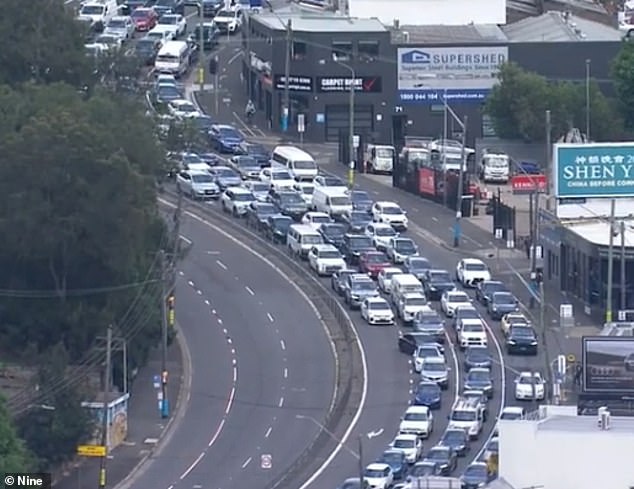The city Aussies are fleeing in droves – and the one we can’t seem to get enough of
Australians are fleeing busy big cities in droves to escape high house prices and ever-growing populations, while overseas immigration is increasing at a record pace.
A record 518,100 overseas arrivals poured into Australia last financial year, with a long-term influx of international students making up the bulk of new residents.
With Sydney and Melbourne home to a higher proportion of foreigners, data from the Australian Bureau of Statistics showed the largest states also saw the largest exodus.
NSW saw the most people leaving, with a whopping 116,166 people leaving the state in the year to June, with most leaving Sydney.
This figure made up 31 per cent of the 372,053 Australians who moved interstate in 2022-23.
Australians are fleeing Sydney's traffic congestion in droves, as overseas immigration increases at a record pace

New South Wales, which includes Sydney, had by far the highest level of interstate migration: 116,166 in the year to June, representing 31 per cent of the 372,053 Australians who moved to another state in 2022-2023 (pictured it is traffic in the west of the city can be seen after the Rozelle Interchange opening)
The number of residents leaving NSW was greater than the 82,008 moving into the state – meaning NSW lost 34,158 residents.
Sydney's average house price of $1.397 million is so expensive that $1 million can barely buy a house with a backyard 40km from the city.
This has caused many residents to move to other states, where seven figures buy a house near the beach or the city center.
By comparison, 76,051 people left Victoria, including Melbourne.
This happened as 74,188 Australians arrived from the interstate, leaving Victoria with a net loss of 1,863 people.
But Queensland had a positive net interstate migration level of 32,255, based on 107,935 people arriving from another part of Australia, while 75,680 left.
Mining-rich Western Australia had a positive net interstate migration inflow of 11,630, with 36,777 arrivals exceeding 25,147 departures.
However, the smaller states had greater outflows than inflows when it came to interstate migration, with South Australia having a net minus of 409, compared to Tasmania's much larger net minus of 2,597.
The territories also lost more people than they gained, with the Northern Territory losing a net of 3,267 residents to other parts of Australia, compared to the Australian Capital Territory's net outflow of 1,591.

Queensland had a positive net interstate migration level of 32,255, based on 107,935 people arriving from another part of Australia while 75,680 left (pictured 'schoolboys' in Surfers Paradise on the Gold Coast)
When it came to overseas migration, the vast majority of the 518,100 arrivals – on a net basis – were long-term residents, classified as those who stayed for a year or more, including many international students.
This is because the permanent inflow for 2022-2023 was limited to 195,000, leaving 323,100 long-term arrivals.
